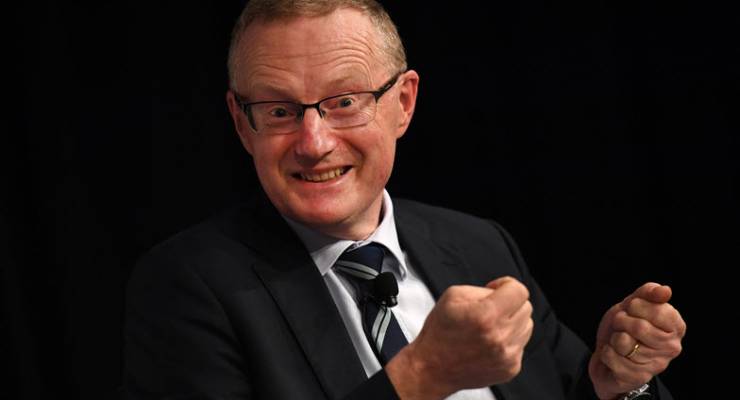
RBA Governor Philip Lowe
A significant difference has emerged on the outlook for non-mining investment between Treasury, via Scott Morrison’s second budget, and the Reserve Bank.
We noted yesterday that the RBA had flagged a concern about the failure of non-mining investment to pick up. This was the view of the budget yesterday:
“the subdued recovery in non-mining business investment in Australia remains something of a puzzle, as supportive conditions have been in place for some time. Business borrowing costs are near record lows, business confidence is solid and capacity utilisation in the non-mining sector is above its long-run average.”
Nevertheless, the budget forecasts non-mining investment will grow by 4.5% in 2017-18, more than double the 1.5% forecast for the current financial year. And that growth will continue at 4.5% in 2018-19, which is important because “overall, total private business investment is forecast to remain flat in 2017-18 and to expand moderately by 3 per cent in 2018-19”. It is noticeable divergence in a document that otherwise sees Treasury and the RBA broadly in accord on the economy.
And then there the wage forecasts — a subject of significant concern to a government that has stopped talking about how expensive it is to do business in Australia and begun sympathising with workers who haven’t had a decent pay rise for several years. The budget is optimistic about a pick-up in wages — it forecasts the Wage Price Index will jump from 2% this year (it was 1.9% in the December quarter, with the March quarter figures out next week) to 2.5% in 2017-18 and 3% the following year.
But economists at the NAB said: “we are very sceptical about the wages forecasts — and hence nominal GDP estimates. As such we don’t believe the medium term fiscal projections — and hence the credibility of the fiscal profile. This budget will be popular, but from an economic perspective ‘if it looks too good to be true, it probably is’.”
The NAB warns of “downside risk should wages growth or employment growth continue to disappoint, or average hours worked continues to decline.”
That would be bad news for the government’s projected return to surplus in the 2020s — and for Australian workers.







A Treasurer from an advertising back-ground ….?
The RBA is “puzzled” by “the subdued recovery in non-mining business investment.. despite every possible “supportive condition”.
Imagine if other sectors of the community had “every possible supportive condition” – the unemployed had enough money to maybe fix the car or afford fares to job interviews, pay extortionate rents and electricity bills so their kids could taste home cooked food instead of junkmuck.
Then there are any number of green projects, from cleaning rivers to provide carbon free pwoer who would lurve a fraction of the aforementioned “most supportive conditions”.
Goose. Sauce. Gander.
It makes one wonder what the hell is in the water cooller that they cannot see the neolib horse has been dead for decade.
Economists at any major Australian financial institution, let alone NAB, are usually loathe to undercut LNP Govt budget actions or forecasts. Where’s the money coming from? – this time for a forecasted surplus – is usually reserved by economists and media for the ALP only.
And the BUDGET DEFICIT WAS – now and forecasted? Currently more than double what the LNP inherited? Deficits are no longer newsworthy, apparently.
But here we have NAB economists stating they are “very sceptical” about the LNP / Treasury’s wages forecasts, and related GDP forecasts. Wage rises represent extra Govt taxation revenue via bracket creep, which appears to be a major basis for the LNP to forecast a budget surplus by 2020/21.
So, The NAB concludes the budget falls in to the category of “too good to be true”. Where is the media interest in this major, credible economics group’s analysis? Where are the immediate mainstream media articles about Dodgy Figures, Smoke and Mirrors, Dicey Forecasts? Guess we’ll have to wait for those articles to be dusted off when the ALP present a budget.